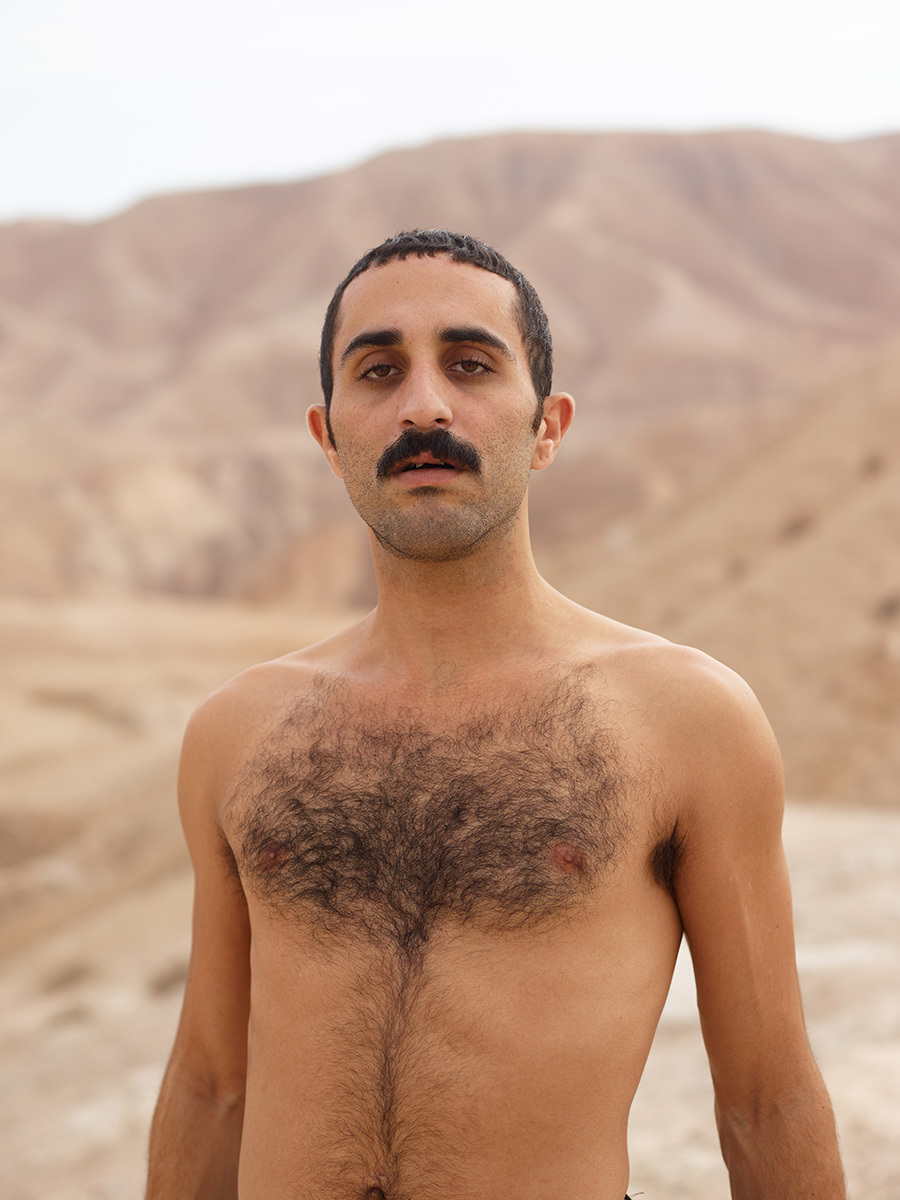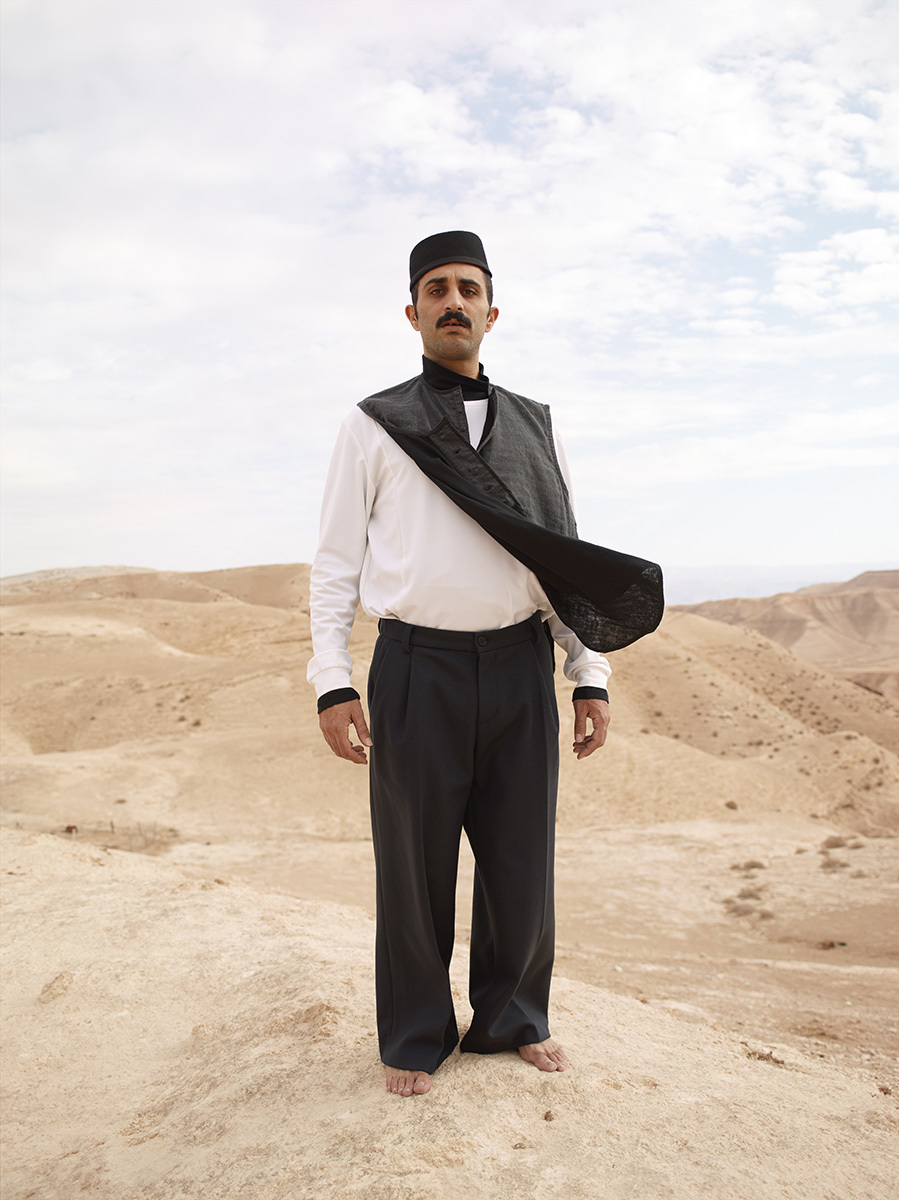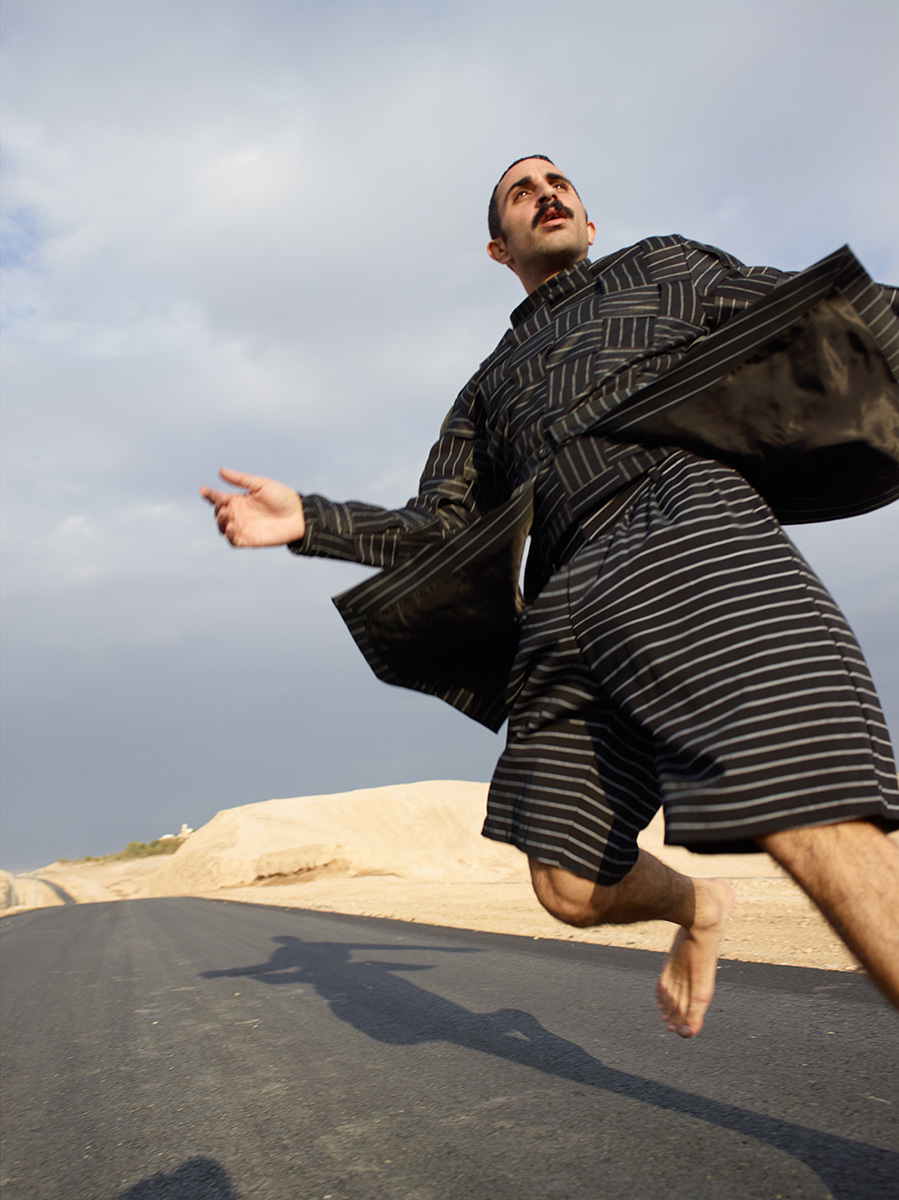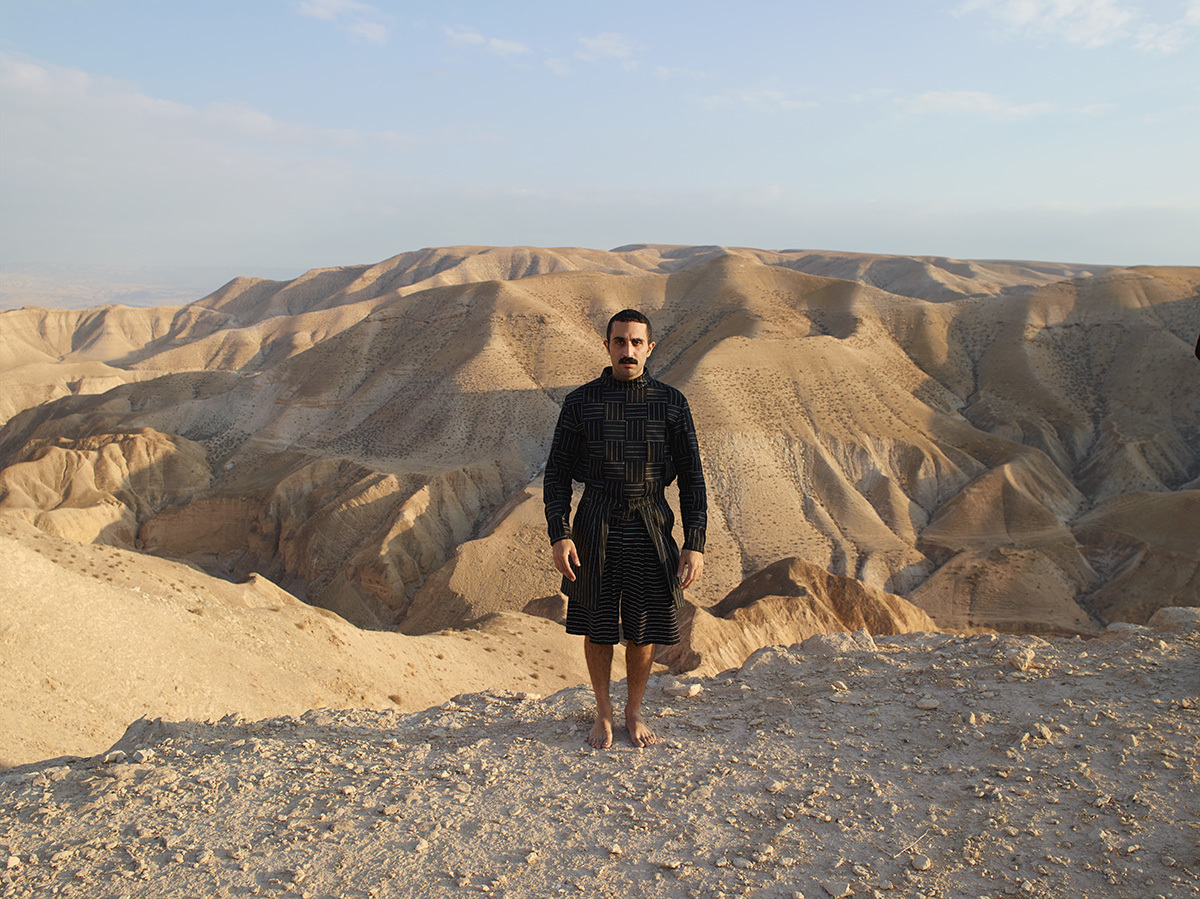Nabi Musa, which translates as Prophet Moses, is a 13th century mosque in Judean desert, in the West Bank. It’s also the site of a Palestinian Muslim festival that lasts five days. Held just before Easter, it’s meant to honor Moses’ memory. Tel Aviv-based designer Eliran Nargassi — alongside photographer Danny Lowe and model Mor Alcalay — went there to shoot a story of Eliran’s latest collection. Nabi Musa provided the perfect backdrop for Eliran’s clothes, which often deal with religion. And if religion runs through Eliran’s clothing, that’s only because it does through much of Israeli society. It’s unavoidable, really.
Eliran grew up in a strict Jewish family, before leaving religion behind. Openly gay now, he designs garments which often feature nods to BDSM subcultures, something he describes as “secular worship.” But the ideas aren’t as simple as that. Not simply a rejection of religion, Eliran’s designs are instead explorations of the tension between the sacred and the profane. There’s a tension at the heart of his work — between religion and secular life, yes — but also between modernity and traditional life and dress. His work conjures an Israel beyond stereotypes, and Israel as a melting pot, too — something not often reflected in the media. It offers a little glimpse of harmony in a world of tension.

How did you get into fashion?
Since childhood I found myself defining what I found and was drawn to aesthetically, in so many aspects, whether it was the clothes I wore, art, and design I found to my liking. After finishing my army service, fashion felt like a natural place for me.
What made you want to start your own label?
It pretty much happened by accident. Shortly after graduating from Shenkar College, I was hired by one of Israel’s major commercial fashion retailers. At the same time, I was also invited to take part in an exhibition that dealt with defining aesthetics. The exhibition was cancelled, and I came to the realization that working for a major fashion brand was holding me back. I decided to quit. Although the exhibition was cancelled, I decided to develop the idea and found myself designing a small capsule collection, just to check the reactions it might get from the industry. I guess I had a good intuition about it, because at that time I felt there was a revival happening in menswear.

What’s the fashion scene like in Israel at the moment? Is there much support for young designers?
Israel is a small country and so the independent fashion scene is quite small, but it’s developing. When it comes to menswear, you can count the independent designers on your fingers. In womenswear, the field is broader. there are many great talents in Tel Aviv; I have a great respect for what a lot of people are doing. There is no governmental funding to support young designers like there is in most European countries, but there are some other programes handing grants and mentoring to young designers.
What’s been the biggest challenge with running a brand outside of one of the major fashion capitals?
There are a few; the first one is timing. While designers and brands all over the world work by the fashion season calendar and present a collection six months ahead, most brands in Israel present their new collections right before the season starts, so it takes some time and efforts to sync. Another challenge is sourcing for quality fabrics. The selection of high-end fabrics imported to Israel is quite limited, so the growth of a brand relies on importing fabrics from Europe or Japan. Last, but definitely not least, is the general lack of international interest in what’s going on here.

Would you describe your designs as being typically Israeli or Jewish? There are many nods to religion in them.
I come from a Jewish observant background, and though not orthodox, it was based on Jewish values. Towards puberty, while discovering my sexual orientation, I started questioning myself and my beliefs, knowing the obvious prohibitions, and knowing it can’t go hand in hand with who I was becoming. Today I find it possible for a person to be both religious and lead a gay lifestyle. When designing, I try to show these differences between the two worlds, but also the harmony of them.
Is it impossible to avoid talking about religion in Israel?
Israel is a melting pot. A country that was established by immigrants from all over the world, everyone brought their own traditions and customs. It’s also holy to many religions — Judaism, Islam, Christianity and more. And as a result, religion is always on the agenda, especially when it comes to Jerusalem and other holy sites. On the other hand, dealing with religion is very individual and personal. I think there’s a place for everyone here — both religious and secular.

This combination of religion, secularism, BDSM — are these controversial subjects to deal with in Israel? Are these political statements at all?
In this world we live in today, dealing with these subjects is controversial wherever you are, not necessarily just in Israel. Talking about sex — especially BDSM and other fetishes, and especially in places where religion is a big part of the dialogue — is challenging. But it’s a challenge I love taking upon myself. Though it is a personal preference, also here the personal turns into political. Others can consider the certain elements we combine within ourselves unacceptable or “unorthodox,” but I look at it as a personal experiment to create a harmony between these two apparently opposite worlds.
How have the reactions to your work differed between Israel to Europe?
There’s not much difference in reaction between the two; the feedback is positive from both. I do think that Europeans are more curious about the story and inspiration behind the brand, and the fact that I’m from Israel and dealing with subjects that some people consider as a taboo — like BDSM, for example. Most of the Europeans I got to meet in the industry have never heard of or were not exposed to an Israeli fashion designer, so it’s also refreshing and curious.
How would you describe your label?
Personal, emotional, and contrasted.

Credits
Text Felix Petty
Photography Danny Lowe
All clothing Eliran Nargassi
Model Mor Alcalay
